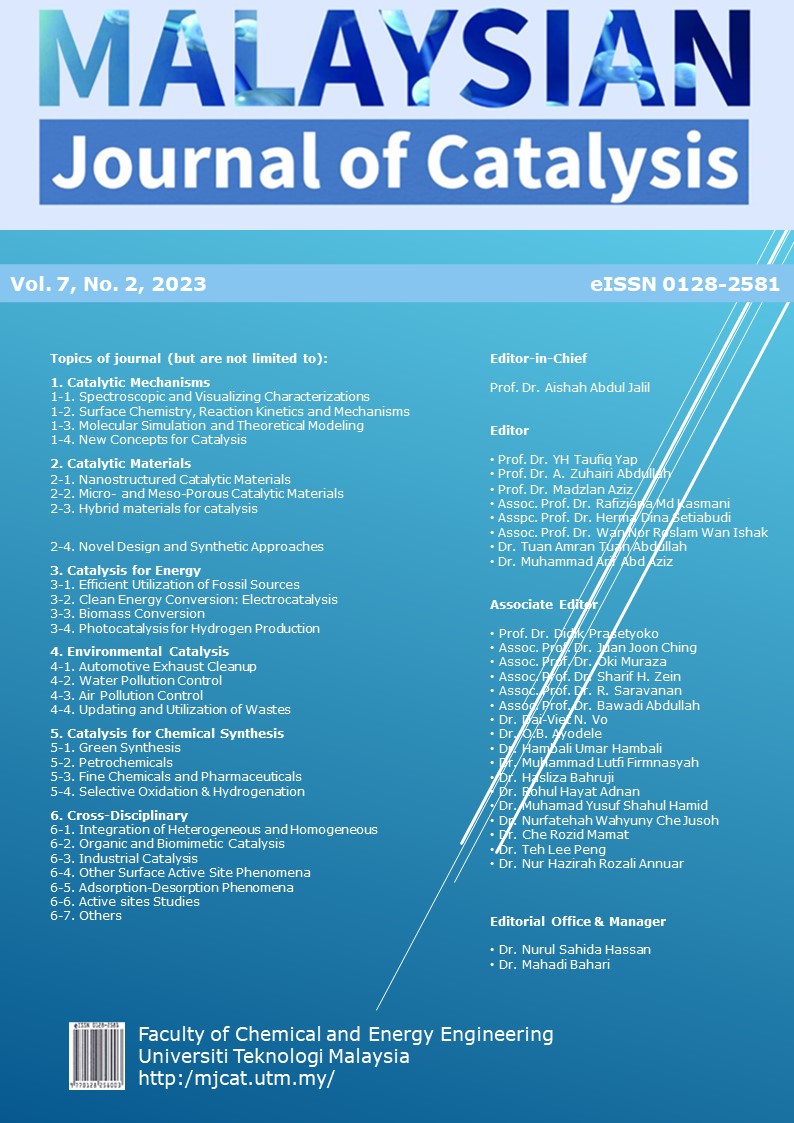Extraction and Characterization of Keratin Protein from Chicken Feathers using Alkaline Hydrolysis Method: Effects of Sodium Sulphide Concentration and Shelf-life Evaluation
DOI:
https://doi.org/10.11113/mjcat.v7n2.173Abstract
This study investigated the extraction of keratin protein from chicken feathers through alkaline hydrolysis using sodium sulphide as a digesting agent. The protein was precipitated using hydrogen chloride and confirmed through biuret test, solubility test, sulfur test, and FTIR analysis. The effect of varying sodium sulphide concentrations (0.5 M, 0.75 M, and 1 M) on the extracted keratin was evaluated. Results showed that a higher concentration of sodium sulphide produced a higher yield of keratin, with 1 M producing 65.8% yield. However, the shelf-life of wet keratin extracted using 1 M concentration was four weeks, compared to six weeks for 0.5 M and 0.75 M concentrations. The dried keratin was unaffected after six weeks. The study suggests that a higher concentration of the reducing agent produced a higher yield of keratin protein but with a shorter shelf-life if drying was not carried out. The utilization of abundant waste generated by poultry industries is crucial in reducing pollution and creating opportunities for valuable product development. The extraction of keratin from chicken feathers provides an eco-friendly approach to waste management and creates opportunities for product development.

Downloads
Published
How to Cite
Issue
Section
License

This work is licensed under a Creative Commons Attribution-NonCommercial 4.0 International License.
The Malaysian Journal of Catalysis publishes open access articles under the terms of the Creative Commons Attribution (CC BY) License which permits use, distribution and reproduction in any medium, provided the original work is properly cited.Â
The Department of Chemistry, Faculty of Science, UTM retains the Copyright on any research article published by Malaysian Journal of Catalysis.
Authors grant Malaysian Journal of Catalysis a license to publish the article and identify itself as the original publisher.















